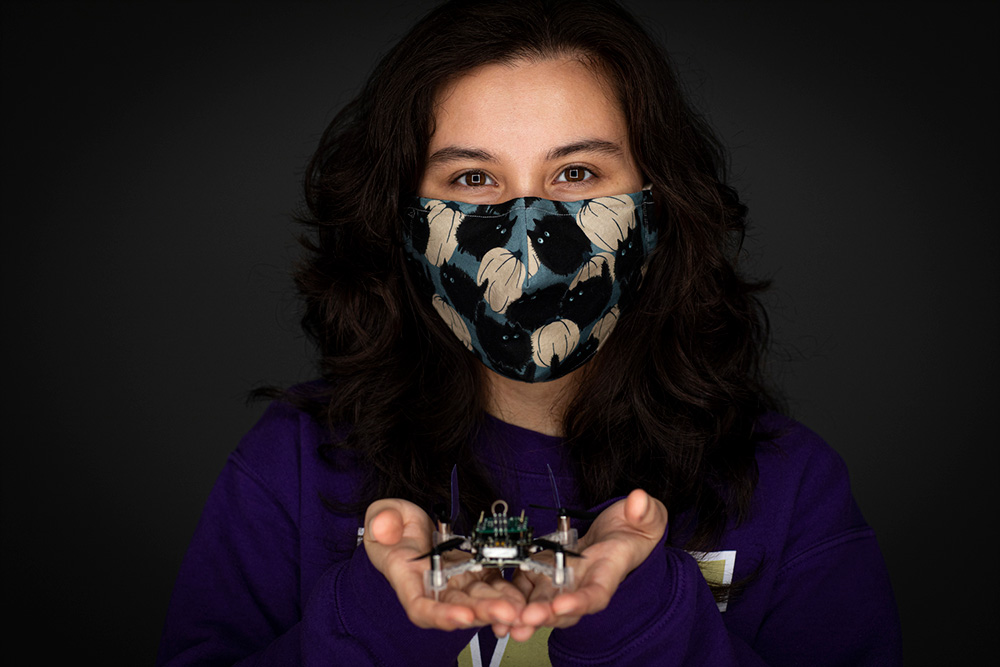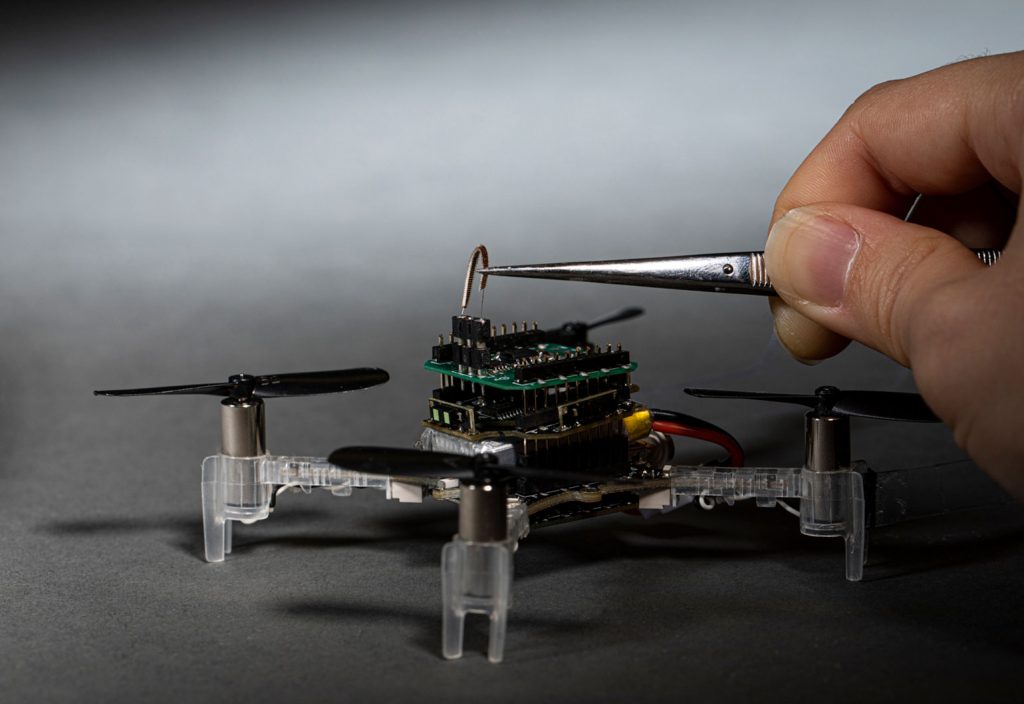Meet the Smellicopter: a drone with a real moth antenna that blurs the line between nature and technology.
Engineers in the United States have developed an autonomous drone that uses a live moth antenna to detect and navigate toward smells.
The Smellicopter combines an open-source quadcopter with antennae from a tobacco hornworm (Manduca sexta) moth.
In the wild, the moth uses its antennae to sense chemicals in the air and fly toward food or potential mates.
The creators of the Smellicopter hope the technology could one day be used to locate disaster survivors, gas leaks, explosives and more.
It could offer an alternative to man-made sensors, which are typically not sensitive or fast enough to pinpoint the source of specific smells while flying through patchy odour plumes.
The bio-hybrid drone was the brainchild of Melanie Anderson, a PhD student in mechanical engineering at the University of Washington.

She said it combines a robotic platform that can be controlled with the sensitivity of a biological organism.
“Nature really blows our human-made odour sensors out of the water,” Anderson said.
The researchers placed the moths in the fridge to anaesthetise them before removing an antenna.
They then added tiny wires to both ends of the antenna and connected it to an electrical circuit.
This allowed the team to measure the average signal from all of the cells in the antenna.
The antenna stays biologically and chemically active for up to four hours after being removed from the live moth — but the researchers said this could be extended by storing it in the fridge.
University of Washington Professor of Biology Thomas Daniel, who is one of Anderson’s supervisors, said the PhD student was an “outstandingly creative” and dedicated graduate who sought to explore the interface of living and engineered systems.
He said Anderson used her training in both biology and robotics to develop the Smellicopter.
“Melanie was able to create an ultra-lightweight system that draws on the best of both worlds — the superb sensory capabilities of living systems and the engineerability and precision that comes with small off-the-shelf robotic flight systems,” Daniel told create.
Searching for scents
To search for odours, the team created a ‘cast and surge’ protocol for the Smellicopter that mimics how moths search for smells.
The drone begins its search by moving a set distance to the left.
If nothing passes a specific smell threshold, the Smellicopter then moves the same distance to the right.
Once it detects an odour, it changes its flying pattern to surge toward it.
The Smellicopter can also sense and avoid obstacles, thanks to four infrared sensors that measure what’s around it 10 times a second.
If anything comes within about 20 cm of the drone, it changes direction by going to the next stage of its cast and surge protocol.
“So if Smellicopter was casting left and now there’s an obstacle on the left, it’ll switch to casting right,” Anderson said.
“And if Smellicopter smells an odour but there’s an obstacle in front of it, it’s going to continue casting left or right until it’s able to surge forward when there’s not an obstacle in its path.”
In lab tests, the Smellicopter flew toward odours that moths find interesting, such as floral scents.
But researchers hope to one day use moth antennae to sense other smells, such as carbon dioxide exhaled by someone trapped under rubble or the chemical signature of an unexploded device.
“The ‘North Star’ is to develop bio-hybrid systems that can replace dogs as detectors of threats, disease, odours and more,” Daniel said.
“[The] next steps involve delving deeply into the molecular basis of sensing — including the use of CRISPR technologies.”
Daniel said the future is bright.
“Even a casual survey of the literature suggests there is an explosion of efforts melding the best of living systems with engineered technologies,” he said.
